I want to make the top of the navigation view a bit smaller. How would you achieve this? This is what I've tried so far, but as you can see, even though I make the navigationbar smaller, the area which it used to occupy is still there (black).
[window addSubview:[navigationController view]];
navigationController.view.frame = CGRectMake(0, 100, 320, 280);
navigationController.navigationBar.frame = CGRectMake(0, 0, 320, 20);
navigationController.view.backgroundColor = [UIColor blackColor];
[window makeKeyAndVisible];
